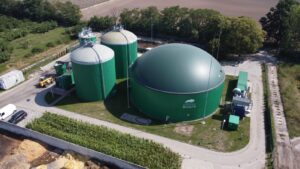Emissions trading is a one-of-a-kind instrument in environmental policy. By putting a cap on the total amount of emissions and distributing the available emissions among the participating companies in the form of tradeable allowances, an emissions trading system (ETS) creates the only commodity market in the world where it pays to produce less. The approach, which forms the central pillar of the EU’s efforts to fight climate change, gives policymakers a high degree of certainty that climate targets will be met. At the same time, ETS harnesses market forces to enable emissions cuts to take place where they are cheapest.
ICAP co-founders Germany and California: working around the leadership vacuum in U.S. climate policy
One decade after the introduction of the first major ETS for greenhouse gases in the Europe, the EU ETS, the number of systems has now risen to 17 worldwide. 40% of global GDP is produced in jurisdictions with an ETS in place. The International Carbon Action Partnership (ICAP) has had a significant part to play in the spread of emissions trading.
“The International Carbon Action Partnership (ICAP) has had a significant part to play in the spread of knowledge and experiences on emissions trading. Founded as a joint initiative in 2007 by Germany and California, at a time when the two jurisdictions wanted to demonstrate common leadership on climate change in the era of a climate-sceptic U.S. presidency, ICAP has over the past decade fostered an intense exchange of best practices and of dialogue between countries, provinces, states and cities that want to take ambitious climate action through cap-and-trade”, says ICAP Co-Chair Marc Allessie, ICAP Co-Chair and director of the Netherlands Emissions Authority.
ICAP as a catalyst for policy learning
Systems around the world are working on future proofing their carbon markets to move their economies onto a low-carbon trajectory and meet their pledges under the Paris Agreement. The reform measures implemented in the EU, California, New Zealand and elsewhere are in no small part the fruits of transnational policy learning through the international expert dialogue facilitated by ICAP.
“ICAP has been an important forum to inspire, empower, and connect all of us working to limit climate change using Emissions Trading Systems. The ICAP members are pioneers in climate solutions and are all benefitting tremendously from the in-depth discussions we have had with representatives from other ETSs. We have shared knowledge, developed capacity, discovered creative solutions to challenges, and found synergies that will continue to encourage our work back home,” says Lois New, director of climate change in the New York State Department for Environmental Conservation. Working across governance levels with committed subnational actors like New York and California has again gained relevance of late, as the Trump Administration reneges on the U.S.’s international commitments to fight climate change.
Giving upcoming systems a head start
Since its founding, ICAP has grown from 19 Members to 35 national and subnational participating governments from four continents. Aside from the international peer community it has created, ICAP has also established itself as a knowledge hub on emissions trading. Its multilingual website makes state-of-the art ETS knowledge accessible and digestible to a wide audience.
“Preparations for the design of a domestic ETS in Mexico have gotten a head start through ICAP knowledge resources such as the courses and publications. Through the ICAP course we’ve been able to lead the ETS discussions within the country and the Handbook has provided us with a simple step by step design process that we are now following in our consultations with Mexican stakeholders,” says Victor Escalona from the Mexican Ministry of Environment and Natural Resources. The ETS handbook, which ICAP produced jointly with the World Bank and which consolidates key lessons learned from existing ETSs over the last decade, has been downloaded more than 12,000 times since its publication last year.
The road ahead: linking systems
The future of emissions trading lies in the connection of domestic systems to form larger, joint markets, where participants from one system can buy and surrender allowances from another. Linking systems sends a strong signal of climate leadership and further reduces the cost of emissions reduction by opening up a wider range of mitigation options. Systems are already starting to link up, most prominently between the cap-and-trade programs in California and the Canadian province of Québec. Next year, this market will also expand to include another Canadian province: Ontario. Yet there is still a long way to go toward a global carbon market. ICAP is now developing a “guide to linking” to help jurisdictions navigate the linking process more smoothly.
“Once a political window of opportunity opens up, ICAP’s material will be ready and out there to be used,” says Constanze Haug, head of the ICAP Secretariat. “Hopefully, when ICAP turns 20, we’ll be able to look at a few larger carbon market hubs on the different continents, knowing that ICAP has helped break down borders on the way toward more effective climate action.”
Source: ICAP








